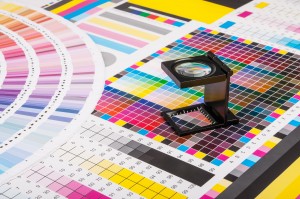Not known Facts About 24??media
Not known Facts About 24??media
Blog Article
Some Known Details About 24??media
Table of ContentsThe Main Principles Of 24??media 3 Easy Facts About 24??media ExplainedNot known Factual Statements About 24??media 24??media Things To Know Before You Get ThisThe Greatest Guide To 24??media
Offset, gravure printing and flexography are the most typical kinds of traditional printing in the packaging room and each includes moving the picture from a plate to the surface. To do this, first home plate needs to be created, and it is the development of these plates that take time, and set you back money.According to PMMI, electronic printing enables brand names and manufacturers to react quickly to client demands while enhancing the supply chain, decreasing warehousing expense and waste, and enjoying faster time to market. That all sounds wonderful, but how does this modern technology do all that? The major differentiator of these technologies is that there are no set-up fees and no plates with electronic printing.
According to Wikipedia, the greatest difference between digital printing and traditional approaches such as lithography, flexography, gravure, or letterpress is that there is no demand to change printing plates in electronic printing, whereas in these analog printing approaches home plates are consistently replaced. This results in quicker turnaround time and decreases cost when using digital printing.

Digital printing is very flexible, so it's very easy to make adjustments to the package style quickly. It all goes back to the plates.
Unknown Facts About 24??media
Much more inventory can mean even more waste down the roadway. With conventional printing methods, short-run printing is simply not feasible. Because a fantastic layout can make or break your item, electronic printing consistently creates top notch, clear and colorful graphics each time. Digital printing on flexible pouches adds the intense, vibrant, and specific graphics that almost bid consumers to connect and touch them.
Loading ... Are you acquainted with the benefits of digital printing? Keep reading to understand when electronic printing can be the very best possible service for your service. Do you know why electronic printing has become the preferred selection of some companies? Both offset and digital printing have their place in the printing market.
In this write-up, we will talk about the advantages of digital printing to aid you better understand if electronic printing is simply what you require. Put simply - digital printing prints material directly onto the paper. It removes some steps needed in countered printing, like creating steel plates. Inkjet printers make use of tiny nozzles to spray beads of ink onto the substrate.
The Ultimate Guide To 24??media
As digital printing continuously progresses, it offers more possibilities and greater outcome high quality everyday. In some situations, the print high quality can be as high as to counter printing. As years go by, digital print is ending up being extra accessible, with improved speed and quality. This is just the factor printing firms are adding electronic printing to their offer.
For offset printing, if any kind of mistake goes unnoticed before producing the plates, there will be a high price of developing a new one. With electronic printing, this is not the case (Custom Boxes). Although everyone constantly wishes there will certainly be no mistakes, knowing the expense of remedying them if they take place is always an excellent concept.
This implies every solitary item will certainly look the exact same, so the possibility you will need to throw out any one of them as a result of variances is reduced. Likewise, because a proofing example is published on the very same equipment as the item itself, color proofing is really exact. Any kind of issues with color will certainly show up on the proof, and thus it will be possible to transform it before printing the entire run.
An Unbiased View of 24??media
Digital printing, on the other hand, calls for very little setup. This is fantastic when you are in a hurry to get your printed materials.

This implies more ask for digital on-demand print manufacturing. Every consumer values a tailored message. Among the benefits of digital printing is that tailoring your advertising products couldn't be easier. Economical, smaller sets allow services to customize each order. Have a back-to-school sale? Make a flyer to target parents and another one to target the students.
Digital printing is the perfect option for variable information printing, like personalized codes and addresses on straight mail. With digital printing, it is much less problematic to make last-minute adjustments to your style. In some cases the ideal kind of interaction is not digital. In these cases, relying upon electronic printing can make sure these orders have a marginal ecological effect.
A Biased View of 24??media
There is also no demand to clean the plates after printing. The advantages of digital printing include that there is no waste from extra or leftover ink, paper, or chemicals because just what's required gets printed. - for weblink very brief runs, electronic printing is the means to go, undeniably.
Gone are the days of complex arrangements and long turnaround times - digital printing has revolutionised the print industry. The printing world has come a long method since the days of Gutenberg's printing press. The new typical is structured processes and cost-efficient options for publishing onto almost anything you can assume of.

Report this page